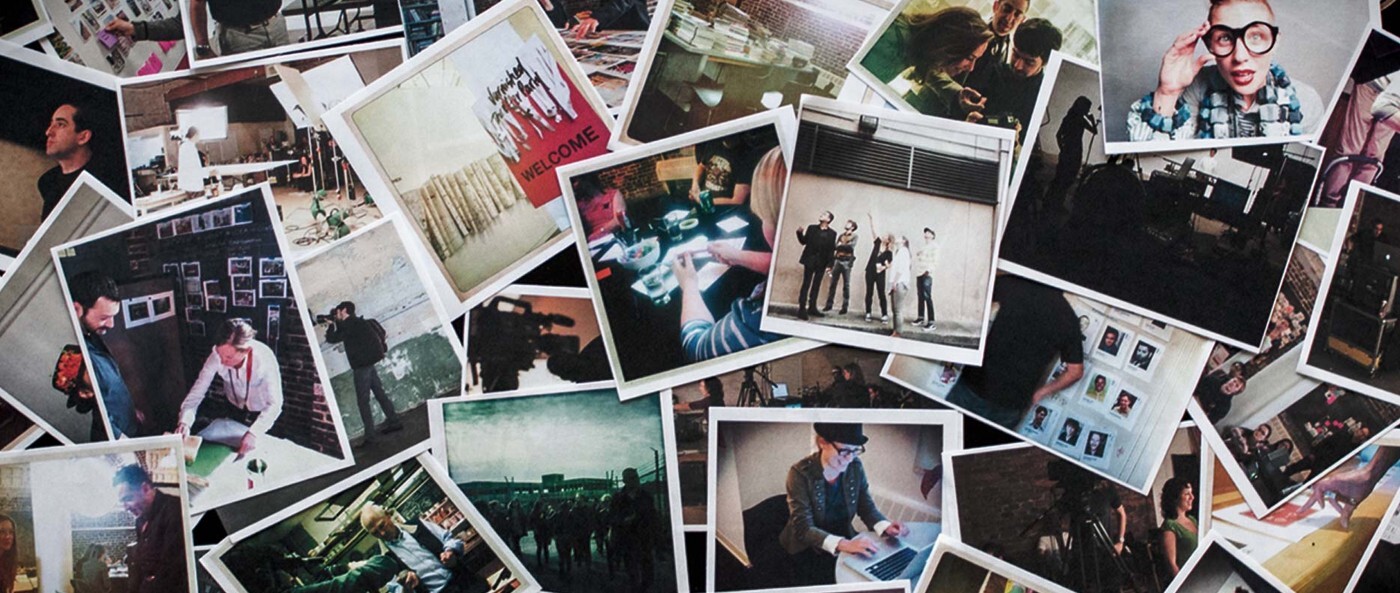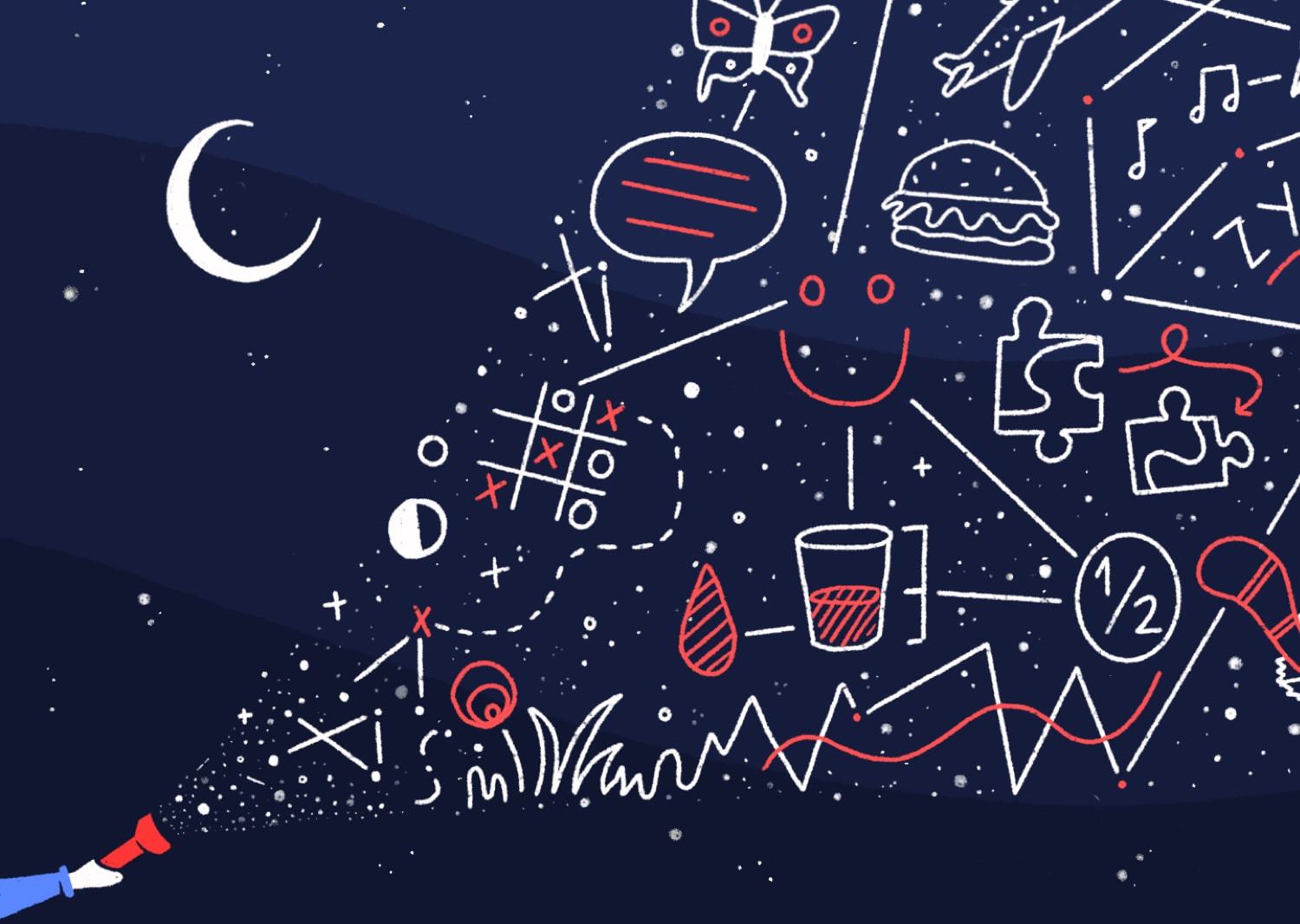
Three pigeons were perched upon a beam above our conference room table. A late-morning San Francisco breeze entered the 18th floor windows, ruffling their feathers. Our client tilted her head up. Her eyes widened. “There are pigeons up there!” she said, interrupting the presentation. “Are those real?” her colleague asked. They were, in fact, real. Real fake.
To understand the pigeons, you have to first understand the nature of my office. Gershoni Creative, the agency I co-founded with my wife Amy, is located in a refurbished Beaux Arts dome atop one of San Francisco’s original landmark skyscrapers. (It was under construction when the earthquake ravaged the city in 1906.) Besides the fake pigeons in the rafters, there are books of magic lining the shelves and glass jars of candy straight out of Willy Wonka’s factory.
It’s all a bit unorthodox, which is exactly the point.
The sweets aren’t for me. In fact, I rarely touch them. I just love the feeling that a massive amount of candy elicits when a client walks into the space for the first time. “Can we eat that?” they ask. “Are we allowed?” Of course they can. The candy allows them to remove boundaries, to express a sense of childlike wonder. They think they’re asking permission to eat candy. What we’re really doing is giving them permission to dream.
This fantastical space emerged, in part, from the gifts of my dyslexic mind. Infusions of whimsy are necessary to help stimulate the imagination. It is not a coping mechanism but an invention mechanism — a way to inject my so-called “difference” into my environment. We surround ourselves with elements that trigger creativity, insight and comfort — what we refer to as “play.”
The amount of conversation, positive energy and genuine emotion generated by the pigeons and the candy jars is astounding. Don’t we all want to feel like it’s Saturday morning, the whole weekend is ahead of us, and we can do anything we want? That’s the mental space I’m trying to invite people to join me in. Social expectations are lifted. Everyone has permission to relax and play. Everyone is free, mentally, to dance.
Teaching people’s minds to dance is how we bring out the best in our clients. But this creative tool is not only a product of the space but also the result of a team that functions as a collection of complementary pieces. The same principles I use to design my space are the same ones I use to build my team.
Some leaders look at their organizations as a checklist of roles to be filled. But I never fit into any checkbox. Dyslexia forced me to organize my team around a different framework, one that resembled an ecosystem rather than a factory. Instead of a top-down, hierarchical model, I found a way to hire team members whose aligned talents produce something greater than the sum of their parts. People who elevate my own abilities and, through their own skills, interests and backgrounds, add extra support to areas where I may be lacking. Gershoni would not be what it is today without the style of workplace feng shui made possible by neurodiversity.
So what is neurodiversity? John Elder Robison defines neurodiversity as “the idea that neurological differences … are the result of normal, natural variation in the human genome.” Steve Silberman, in his book Neurotribes, describes it as “the notion that conditions like autism, dyslexia and attention-deficit/hyperactivity disorder (ADHD) should be regarded as naturally occurring cognitive variations with distinctive strengths that have contributed to the evolution of technology and culture rather than mere checklists of deficits and dysfunctions.”
More than an idea, it’s a different attitude. Rather than approaching dyslexia and other differences as “disorders” to be cured, it’s more productive to see them as resources to be mined. “A neurodiverse workforce,” argues entrepreneur Phil McKinney, “brings new ways of thinking that spark creativity and innovation.”
More people than you realize are neurodivergent. (Neurodiversity, like diversity, refers to a group of individuals; a single person is referred to as neurodivergent.) One in 10 people worldwide are dyslexic. One in 68 children are on the autism spectrum. Eleven percent of youths are diagnosed with ADHD.
In the last decade, neurodiversity has evolved from a buzzword within the education and mental health communities into a corporate movement. A wave of campaigns have sprouted up, promoting the hiring of employees with dyslexia, autism and other conditions. Prominent companies such as Hewlett Packard, Ford and Willis Towers Watson have created employment programs centered around neurodiversity. In 2015, Microsoft launched an hiring initiative for employees with autism; similarly, software giant SAP announced a campaign to make 1 percent of its workforce neurodiverse by 2020. Additionally, Google, Salesforce, IBM and JPMorgan Chase have all introduced exploratory initiatives.
Gershoni Creative recently partnered with Tata Communications and UC Berkeley robotics professor Ken Goldberg on a study, “Cognitive Diversity: AI & The Future of Work,” which showed how diverse combinations of humans and machines can work together to solve problems. This phenomenon, known as “multiplicity,” extends the concept of neurodiversity into the realm of nonhuman thought yet offers the same general premise: Great minds do not necessarily, as the saying goes, have to think alike.
Efforts to reframe the conversation around neurodiversity in the workplace have not come without controversy. U.K.-based creative agency The Garage provoked claims of reverse discrimination with a job listing that instructed “only dyslexics should apply.” The Garage’s founder, self-described “dyslexic entrepreneur” Chris Arnold, explained, “We are simply looking for the best innovative thinkers, and they are usually dyslexics.”
Yet it is important to emphasize that these companies are motivated not solely by goodwill but also sound business logic. There is an emerging field of research touting the benefits of neurodiverse talent. Harvard Business Review cited managers who reported benefits “far beyond reputational enhancement,” including “productivity gains, quality improvement, boosts in innovative capabilities and broad increases in employee engagement.”
Dyslexia, in particular, offers a number of distinct professional benefits. Matthew Schneps argued in Scientific American that dyslexia correlates strongly with enhanced visual intelligence, creativity and big-picture thinking. Neurodiversity advocates Brock and Fernette Eide outlined four key “reasoning” abilities common to the dyslexic brain in their groundbreaking book The Dyslexic Advantage: spatial reasoning, narrative reasoning, interconnected reasoning and the capacity to reason in dynamic, uncertain situations. A recent study by Julie Logan found a higher rate of dyslexia among entrepreneurs than managers, suggesting that “dyslexic entrepreneurs develop coping strategies to manage their weaknesses, which are subsequently of benefit in the new venture.” In other words, personal coping strategies become professional business assets.
My career as a creative director is built upon the advantages that dyslexia provided me, just as my agency is a success due, in part, to the benefits of neurodiversity. Dyslexia enabled me to imagine a different creative architecture for an office. By identifying my own strengths and weaknesses, I understood what skills I needed to integrate throughout the rest of the agency to create balance. That balance, in turn, built trust — a necessity for any team but especially a neurodiverse one — that empowers each employee to be his or her best self.
So how does one create a neurodiverse team? For me, I look for people who see the world differently. People at different stages of their lives. People with different experiences — international, cultural, academic. At the same time, we are hardly an office full of neurodivergent minds. Most of my team is as far removed from dyslexia as I am from playing for the Golden State Warriors. But it’s the balance between neurodivergent and not that is key. We choose people with different mind-sets to ensure our work is enriched by unexpected perspectives and points of view. Because when you put neurodivergent people in situations that play to their strengths, their performance is off the charts.
Neurodiversity is as much a style of interaction as it is a recognition of our differences. It is a rhythm that governs everyone involved in the dance. Learning how to flow in and out of each other’s ways of thinking is critical. The first step is understanding that we can still relate even though we are neurologically opposed, that we can inspire each other at the pivotal crossroads of a brainstorming process, coming from opposing points of view. I may be in a state of mind where I need to talk to someone who thinks in a more structured way. They will provide a certain framework, then my mind will be free to return to a creative flow.
But it’s never a contest. It’s not a battle of brain vs. brain. We are not competing; we are co-creating. This co-creation consists of what you bring and how I react. I ask, and you jump off of me. That play — driven by the exchange, not the outcome — manifests original ideas and tends to reach those ideas quicker than a more structured method.
When you work in such close collaboration with your team, you’re conducting an orchestra. The conductor sits outside the instruments and is able to hear the entire orchestra from that different vantage point. As a creative director, I’m listening to all the notes my team is playing at once. I know everyone’s skill level, can tell where they are in the music and know when and how much to push them to deliver the best performance. I look at what we’re trying to achieve and use that vision to conduct each instrument with greater sensitivity, finesse and intention. The reward is a true collective. They can’t do it without me, and I can’t do it without them.
If you’re part of an organization that wants to innovate, there are a few simple steps you can take to cultivate a neurodiverse team.
First, reconsider what you’re looking for in an interview setting. A person who checks all the boxes might be a perfect fit — or they might happen to check the same exact boxes as everyone who’s come before, inhibiting both diversity and creativity.
Second, create a flexible work environment where atypical minds can thrive. Understand that your work style is just that — yours — and what constitutes an optimal condition depends on the person.
Third, give yourself permission to play. Once you learn how to conduct neurodivergent minds, the results are transformational. The harmony is sweeter than any single instrument could achieve on its own.


